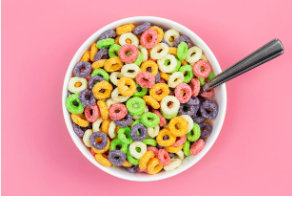Legislators in California have enacted a novel measure that, if signed by the governor, would prohibit the use of six artificial colors in food provided at the state’s public schools.
The law, which was approved by the California assembly on Thursday, would make it illegal for pupils to be served meals and drinks that include artificial colorings during regular school hours.
These colorings have been linked to neurobehavioral issues in certain kids. The Environmental Working Group, a research and advocacy health group, and Consumer Reports co-sponsored the bill, which was proposed by Democratic Assemblymember Jesse Gabriel.

Should the measure be signed into law by Democratic Governor Gavin Newsom, California will be the first state to outlaw the chemicals in school cafeterias. December 2027 would be the start of the law’s implementation.
Gabriel said in a statement on Thursday that “California has a responsibility to protect our students from chemicals that harm children and that can interfere with their ability to learn.” “This bill will encourage manufacturers to stop using these harmful additives and empower schools to better protect our children’s health and well-being.”
Assembly Bill 2316, also known as the California School Food Safety Act, would outlaw Red 40, Yellow 5, Yellow 6, Blue 1, Blue 2, and Green 3. According to Gabriel, these substances are “nonessential” and have natural substitutes such pomegranate juice, beet juice, or turmeric. According to Gabriel, the bill would just demand substitutes, which might be as simple as altering a single ingredient in the recipes, rather than outlawing any particular meals or beverages.
According to the Food and Drug Administration, among children in the general population who have not been diagnosed with disorders like attention-deficit/hyperactivity disorder, there is no evidence linking synthetic dyes to behavioral issues.
However, a thorough 2021 review conducted by the Office of Environmental Health Hazard Assessment of the California Environmental Protection Agency, which was referenced in the bill, discovered that there is evidence linking food dye exposure to negative behavioral outcomes in some children “both with and without pre-existing behavioral disorders,” and that “synthetic food dyes are associated with adverse neurobehavioral effects, such as inattentiveness, hyperactivity, and restlessness in sensitive children.”

The measure was introduced in response to the Centers for Disease Control and Prevention’s recent nationwide increase in ADHD diagnoses.
An FDA spokesman told NBC News on Friday that the organization has reviewed the literature study referenced in California’s bill and that evaluating fresh evidence on the safety of food additives is a “priority.”
According to the spokesperson’s email, “the majority of children do not experience any negative effects from eating foods containing color additives, but some evidence suggests that certain children may be sensitive to them.” “The FDA will keep evaluating new scientific findings and ensuring the safety of color additives that have been approved.”
Following the California Food Safety Act’s enactment last year, which Gabriel also proposed, AB 2316 forbids four food chemicals linked to possible health issues from being used in items sold throughout the state as of January 2027. Brominated vegetable oil, which is frequently used as a stabilizer in drinks with citrus flavors, was one of the substances it outlawed. The FDA withdrew its approval for the use of brominated vegetable oil in food and beverages nationwide last month, stating that it had come to the conclusion that the oil was unsafe for human consumption.
Red 3, propylparaben, and potassium bromate were also prohibited from being sold in food stores throughout the state under the California Food Safety Act. The chemicals have been linked to a number of health issues, including cancer and hormone disruption.
The vice president of government affairs for the Environmental Working Group, Melanie Benesh, expressed her approval of the most recent action taken by California state lawmakers.
“This is a significant victory for Californian parents and students. There is strong proof that certain children are highly susceptible to these dyes, so parents shouldn’t be concerned about their children’s concentration and academic performance being negatively impacted by dye exposure, the speaker stated.
Benesh pleaded with the FDA to reevaluate removing artificial coloring from the country’s food supply.
Benesh declared, “The FDA ought to be acting and taking measures to ensure that all of our children are protected from what’s in their food.” Many of these vividly colored food dyes are merely added to food to increase its kid-friendliness. It doesn’t improve the nutritional content. Thus, it is quite feasible to accomplish this. It returns the blame to the industry while improving the health and safety of our children in our schools.






